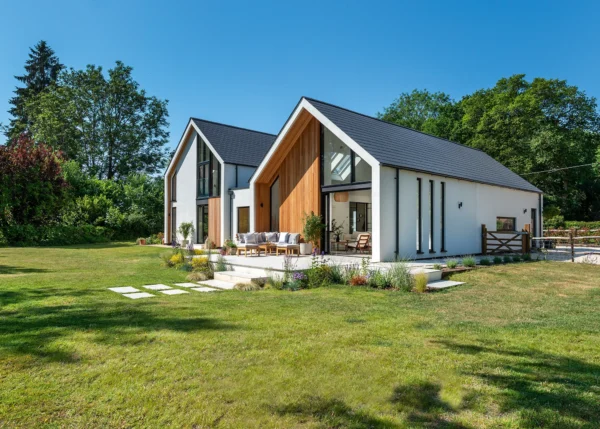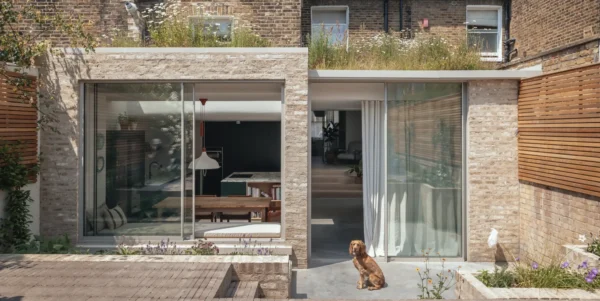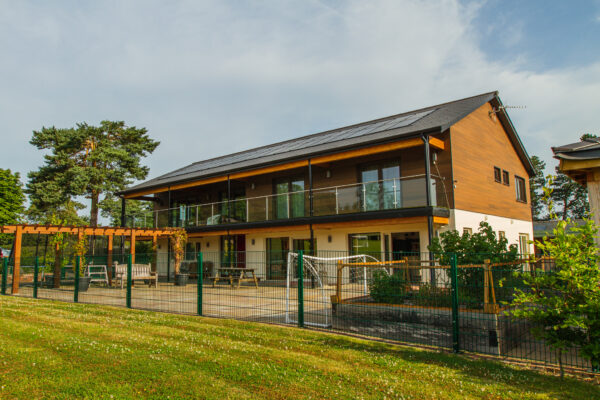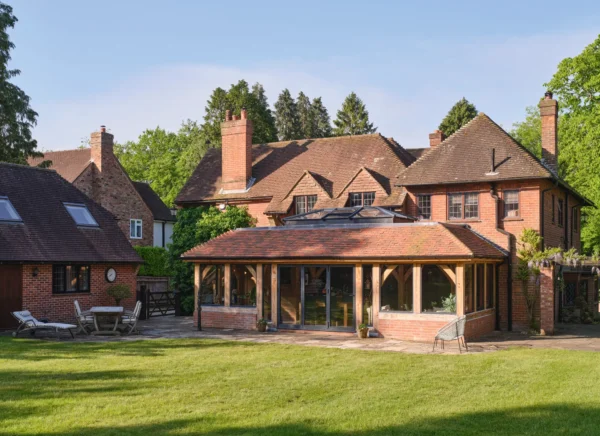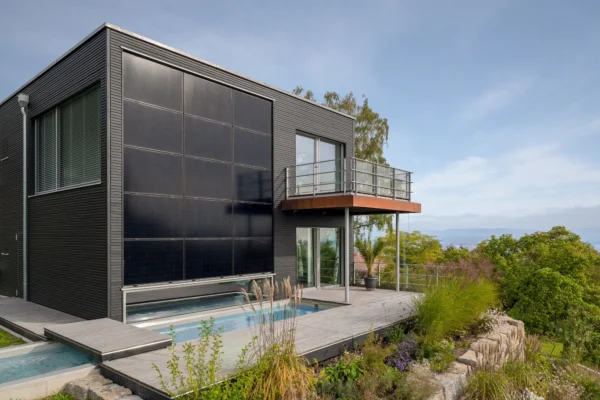Build It Awards Shortlist: Best Self Build Home or Renovation Project 2023
It’s that time of year again – the countdown to the annual Build It Awards ceremony on 24th November is on. In the run-up to the event, our editorial team and the Awards judges have pored over all the houses showcased in the last 12 issues of the magazine, with the goal of selecting just six contenders in with a chance of being crowned Build It’s Best Self Build or Renovation Project 2023. However, this year’s choice was so impressive that picking six proved an impossible task, meaning there are seven amazing properties for you to choose from.
From sleek new builds to sensitive period renovations that balance historic charm with modern details, this year’s homes highlight what’s possible when you set your mind to the task of developing a bespoke house. Our selection includes dwellings that are finished to a broad spectrum of budgets, designs and styles, cherry picked from all over the country. What they have in common is the vision, ambition and hard work required by the homeowners who created them.
Though each project is worthy of taking the top prize, there can only be one victor – so we need your help to decide which property comes out on top. The winner is chosen 100% by you, our readers.
Voting is now closed. The winner will be announced at our Awards ceremony on the 24th November 2023. Follow our Instagram, Twitter and Facebook to stay up to date and find out who takes home the award on the night!
Lowri & Andy Horstead: Multigenerational Contemporary Home
Following the passing of her father, Lowri Horstead was keen for her mother, Non, to move in with her, husband Andy and their two children. Their existing home wasn’t suitable, and so the family purchased a bungalow only a few miles from their current home to then demolish it and rebuild a new, contemporary property suited to accommodate all the family.
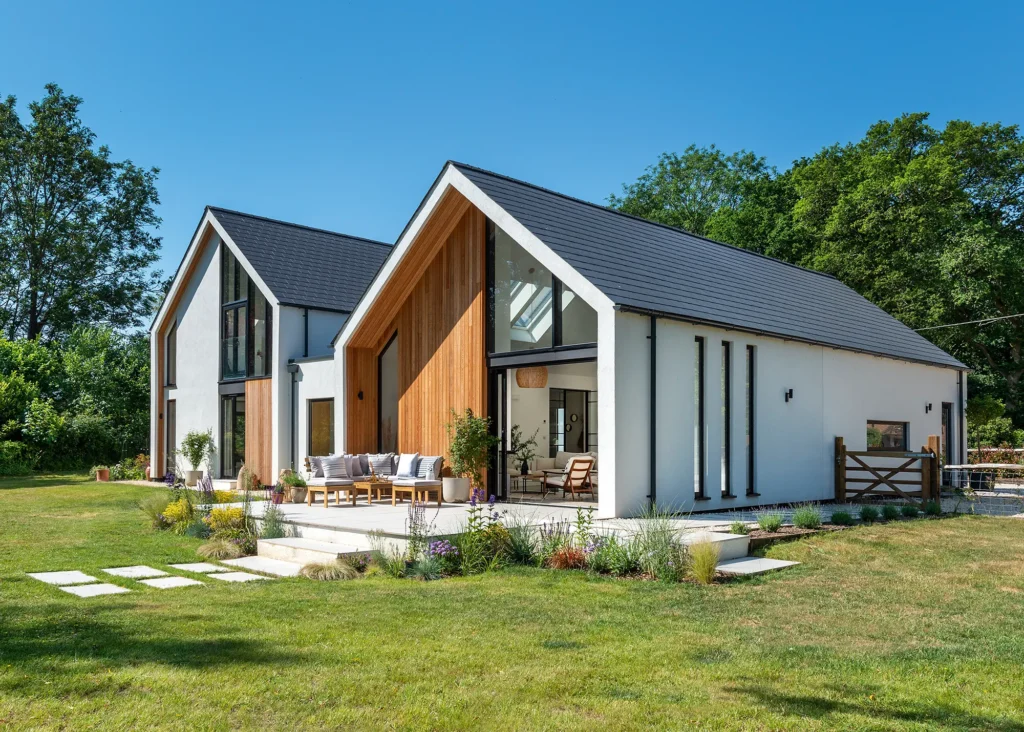
Photo: Katy Donaldson
Lowri had a clear vision for the project, developing a design which was then drawn up into plans by C7 Architects. The house shell has been constructed using timber frame, with SIPs panels forming the roof. White render and Siberian larch cladding have been used on the external facades and the roof has been finished with sleek slate tiles. “We always wanted the front elevation to be understated,” says Lowri. “It makes the internal spaces all the more unexpected, starting with the views of the garden – through the snug’s picture window – as soon as you enter through the front door.”
The original house was demolished and recycled where possible. The roof tiles, from a long closed-down local brickworks, were removed by hand and sent to a reclamation yard. The wooden beams and floorboards were reused as flowerbeds, and the rubble as hardcore for the driveway.
An air source heat pump (ASHP) and underfloor heating (UFH) deliver low energy living and remove the need for radiators, allowing for a minimalist design. The high levels of insulation mean very little heating is needed in the colder months, So, they opted for an electric fire to avoid overheating the space.
Lowri wanted their home to be futureproof, so the rooms have been designed for accessibility and flexible use. Clever details add wow-factor: recessed skirting boards with shadow gaps and a large pocket sliding patio door create a clean finish. Carefully designed lighting, such as stripsthat run the length of the roof ridge in the vaulted ceiling and along the underside of the banister, add luxury.
It was a joy for Lowri to be able to use her design skills to fulfil their multigenerational needs. “It works even better than we could have anticipated,” she says. “We feel really lucky to be able to live in a house we have designed and built.”
| OWNERS: | Lowri & Andy Horstead |
| PROJECT: | Self Build |
| LOCATION: | Surrey |
| SIZE: | 340m² |
| PROJECT COST: | £590,094 |
| COST PER M² | £1,736 |
Alice Constable Maxwell & George Walker: Colourful Victorian Terrace Extension & Renovation
Enjoying London life, and keen to stay close to where they lived, Alice Constable Maxwell and George Walker found a renovation opportunity in Acton. A lucky find, the Victorian terrace had been owned by the same family for decades: “It hadn’t been touched for 50 years and was rundown, but had such a homely feel,” Alice says.
“We looked at the original house plans and thought about how we were going to reconfigure the space. We knew we wanted to move the stairs and extend at the rear. The property doesn’t have a big garden, so it was a question of how much exterior space we were prepared to sacrifice.”

Photo: Simon Maxwell
Alice came up with a plan for a single-storey extension with a generous pitched roof, and a dormer loft conversion that would provide space for two extra bedrooms. When it came to the workforce, Alice knew just the man for the job: “I’d worked with Pawel Klojzy of YPP Services before, so I wanted him to take on our house.”
The couple were renting a house in North West London, but not long into the project, Covid hit. They made the decision to relocate to the countryside until the pandemic eased, and so Pawel took on ownership of the work. “That was probably the hardest part, because we were forced to make decisions over the phone,” says Alice.
From the outset, the couple were keen to focus their budget on the fabric of the house. “We knew we could replace anything inside later on,” says Alice. They prioritised the glazing, replacing the old windows with efficient ones. Vibrant French doors and a large flat roof window were chosen for the kitchen.
In December 2022, the family moved in. The new front door leads into the former garage – now a light hallway, complete with a new staircase. The entrance flows through to the lounge, where the original front door can still be found, then into a study/dining area and to the kitchen.
The first floor is home to two bedrooms, a bathroom, and a flexible laundry space, while the loft conversion features a large bedroom and bathroom. The finished property blends modern elements with traditional design details and bold pops of colour; every room is bursting with personality.
| OWNERS: | Alice Constable Maxwell & George Walker |
| PROJECT: | Renovation & extension |
| LOCATION: | London |
| SIZE: | 167m² |
| PROJECT COST: | £320,000 |
| COST PER M² | £1,916 |
Ray & Ruth Davis: Innovative subterranean self build home in ICF
Redeveloping a garage and artist’s studio on their land seemed like the perfect solution to Ray and Ruth Davis’ desire to downsize in their retirement. The couple had lived in their home in Glasgow for over 30 years, and Ray had previously converted the studio for his daughter and her husband, who moved out when they needed more space. “I was thinking of extending the building to create a larger dwelling, but the local planners wouldn’t allow this. Instead, I thought we could knock down the studio and garage and build a new house.”
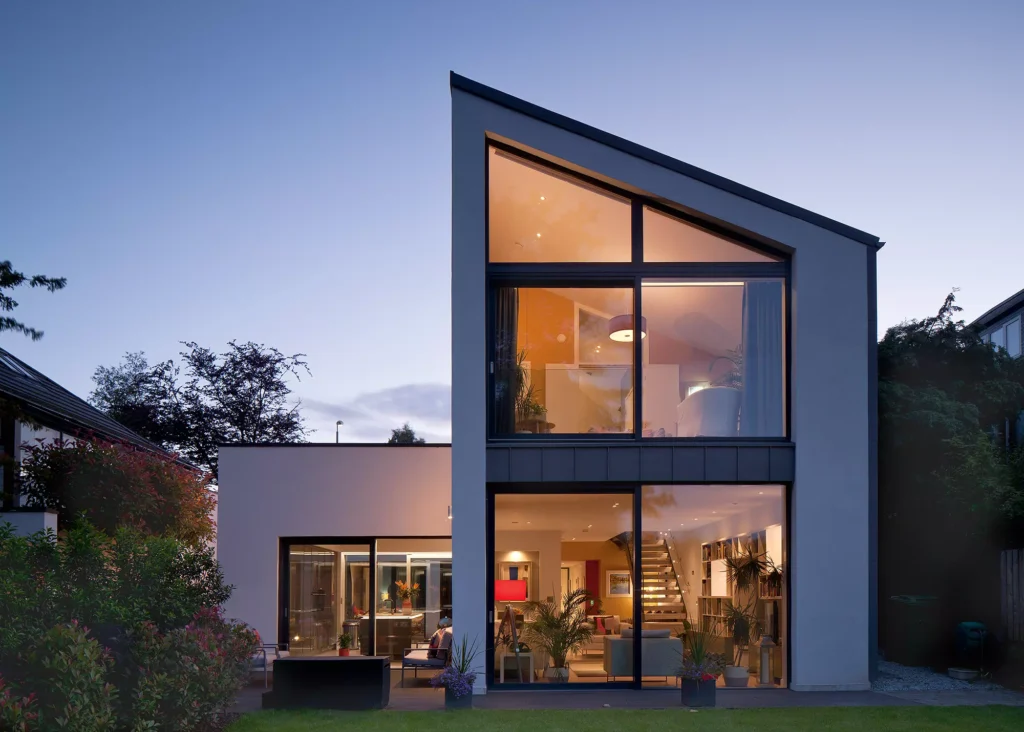
Photo: David Barbour
The couple approached architect Stuart Cameron of Cameron Webster Architects to come up with a fresh approach. He proposed a house that would continue the street pattern, where bigger properties were followed by a smaller garage or studio buildings, forming a major and minor effect that follows on and on.
The property needed to appear ancillary to the main property, so the design sits low to the ground, with less than half of the footprint visible from the road. The house is set back from the front boundary behind a screen of planting and the existing wall. Stuart came up with the idea of subterranean bedrooms, lit by a sunken courtyard. “This allowed much more natural light inside,” says Ray.
The couple chose to use ICF (insulated concrete formwork), which meant they could build into the ground without having to put in temporary shuttering. The lower level features the principal living areas, which open onto the rear garden.
The front door opens to the upstairs level, which hosts a living room and bathroom. The entrance sits behind a rendered wall, and the driveway is designed to match the existing houses along the road.
From the street, the full extent of the property can’t be seen. The upper level makes its impressive statement at the rear, with a right-angle glazed apex and sliding doors stacked on two storeys. The roof forms are a combination of a dark hipped pre-weathered zinc pitch, akin to the lead details on roofs common to the area, and a flat single-ply membrane.
The home has an air source heat pump, which powers the underfloor heating, and there is triple glazing, too. “We weren’t able to go completely passive, but the property is cocooned with insulation underneath the slab, up the walls, and at roof level, which makes it very efficient,” says Ray.
| OWNERS: | Ray & Ruth Davis |
| PROJECT: | Self build |
| LOCATION: | Glasgow, Scotland |
| SIZE: | 197m² |
| PROJECT COST: | £541,895 |
| COST PER M² | £2,751 |
Toby Diggens & Bella Lowes: Holistic Barn Conversion & Extension
Toby Diggens and his partner, Bella Lowes, were looking for a little plot of land to build on and grow plants for their landscape business. While searching for the perfect opportunity, Bella’s parents bought a former farm in Devon, and a new opportunity presented itself.
There were derelict outbuildings available to convert, along with the possibility to raise native breed cattle, while reviving the native habitats and landscape. A cob, stone, and timber barn had the most potential. “Although there had been remedial works to keep it standing, it was in a particularly poor state,” says Toby.
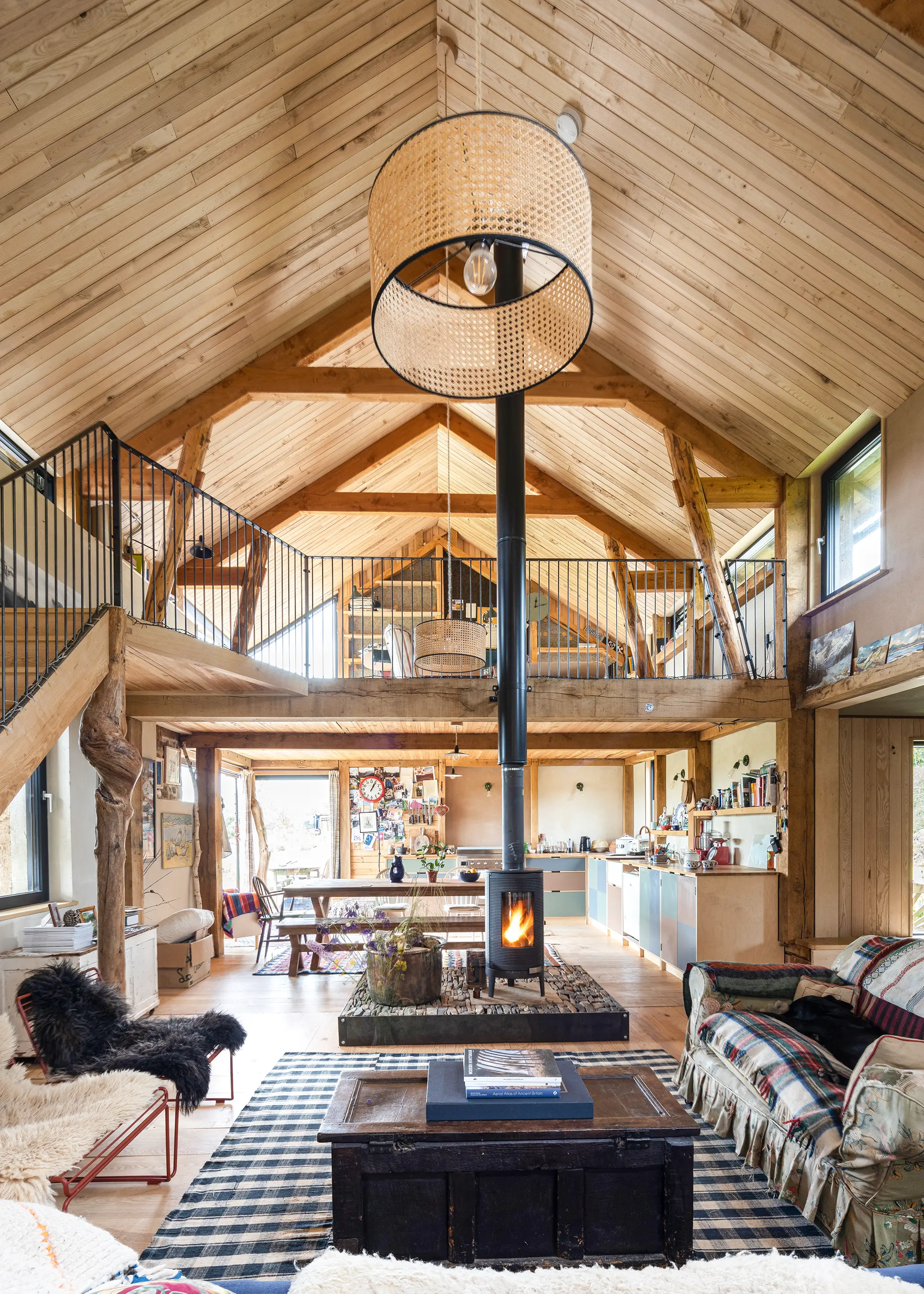
Photo: Simon Burt
The couple wanted to restore the existing structure and create a holistic landscape, with the barn as the centrepiece. They decided to run the project under the Living Building Challenge – an international accreditation embracing a building’s wider setting and ecological impact. “It’s about innovation, not just hitting a standard,” explains Toby. “I loved the idea of doing more than ‘just enough,’ and it was great to tell assessors how we overcame individual problems. For example, our timber was non-FSC, as it came from our woodland.”
Toby and Bella’s first hurdle was planning – the barn was within the curtilage of a listed property, so full planning was required. The couple crafted a design for a conversion and extension that they knew would be attractive to local planners; one end of the barn was widened, with a simplified interior to keep lots of the original fabric, including some doors and pine trusses.
Consent was given, and it was on to the next challenge. The property was in a poor condition – there was extensive water damage due to years of neglect. “When we took the trusses off, the entire front of the stone wall fell off overnight, and then most of the front cob wall fell over,” says Toby. It was a labour of love, but rebuilding took place, and the barn was saved.
The existing foundations were enhanced with new strip supports using Regen 6, which is a sustainable cement alternative. The roof was replaced with corrugated tin and a native-planted green roof, and the new extension is timber frame – heavily insulated with an organic material. As the home is so thermally efficient, there is a limited demand for heating, but when required it’s supplied by a woodburning stove, fuelled by timber from hedge-laying and coppicing on the farm.
| OWNERS: | Toby Diggens & Bella Lowes |
| PROJECT: | Conversion |
| LOCATION: | Devon |
| SIZE: | 200m² |
| PROJECT COST: | £276,000 |
| COST PER M² | £1,380 |
Freddie & Katie Pack: Modern Timber-Clad Family Farmhouse
Freddie Pack built his first home, a compact cabin for him and his now-wife Katie, on his family’s farm on the stunning Romney Marsh in Kent. However, after a few years of saving, the couple decided they needed more space.
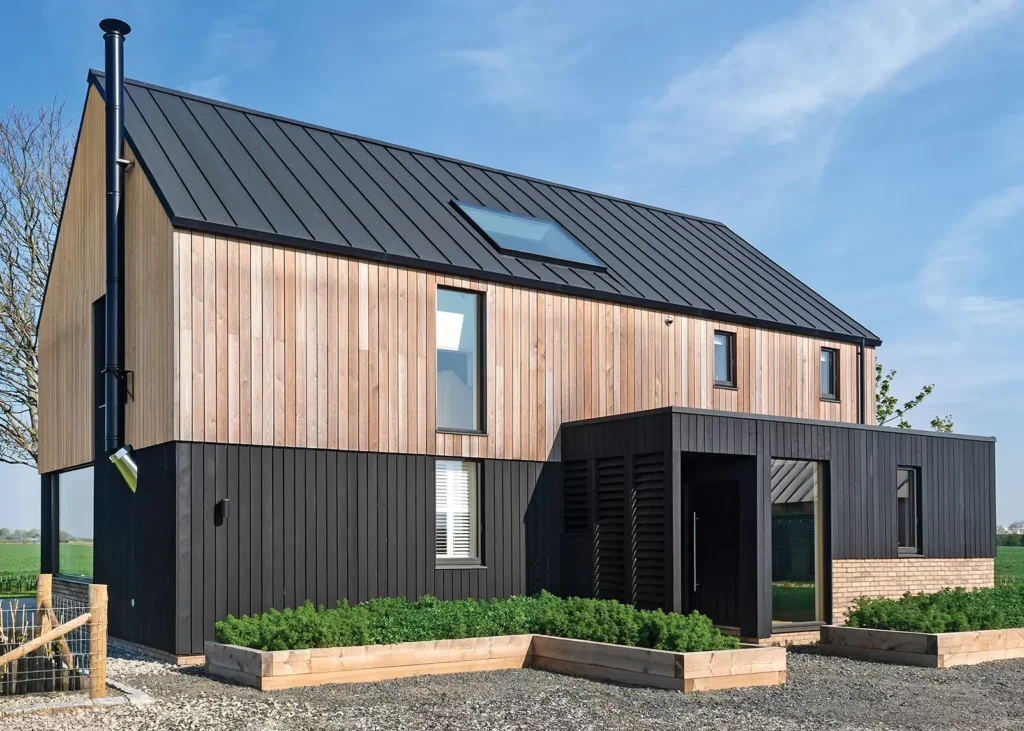
Photo: Richard Gadsby
There was another plot on the family farm – just a few fields away – that felt like the ideal spot. “I would always drive past and think, one day I am going to live on that plot,” says Freddie. There was an existing property on the site already – a rather uninspiring 1950s brick house. The couple considered renovating it, but quickly realised it would be more cost-effective to knock down and self build from scratch.
To recreate the farm-style design with a modern twist, the couple enlisted the help of Rob Pollard of RX Architects, who says: “the brief was to create an adaptable and practical country home. The design needed to suit their lifestyle now, but also with the potential to adapt as they grow as a family.”
A boot room, utility space, and office were all essential for them, as were bright, open and fun living spaces. The design also incorporated high levels of insulation, triple glazing and an air source heat pump, resulting in a low-energy property with minimal long-term running costs. The design and planning process took 18 months, and permission was granted to create a detached dwelling alongside a garage.
Demolition took place over two weeks in April 2020, just as the world was floored by Covid. Freddie had foreseen the potential materials shortages and had been able to accrue stock gradually and in advance. The couple continued living in the cabin while work was being done, and Freddie was on site every day getting his hands dirty.
Outside, the home is clad in Siberian larch, with charred sections on the lower level. “I was used to working with larch, and we went for shadow gaps rather than rebating. We had to put a black felt wrap on the exterior, followed by batons, a double skin of UV facade felt, and then the cladding,” he says.
Inside, a Siberian larch staircase is a focal point in the downstairs living space, while the open-plan area features a dark teal kitchen, plus a dining and sitting area with a large void above, finished in raw plaster with a beautiful pink hue. A larder space, office, utility, WC, and boot room then complete the layout downstairs. The landing overlooks a void space, but there is always the option to build more bedrooms should the need arise in the future.
| OWNERS: | Freddie & Katie Pack |
| PROJECT: | Self build |
| LOCATION: | Kent |
| SIZE: | 175m² |
| PROJECT COST: | £350,000 |
| COST PER M² | £2,000 |
Suzanne & Steve Richardson: Hands-On Timber Frame Home
After living in France for several years, Steve and Suzanne Richardson moved back to the UK and built their own energy efficient house in the Suffolk countryside. The proposed design detailed in the plot’s outline planning permission didn’t suit their taste or meet their eco goals. So, architect Matt Plummer, director at Cocoon Architects, developed a sleek, low-carbon design that sits sensitively within its landscape.
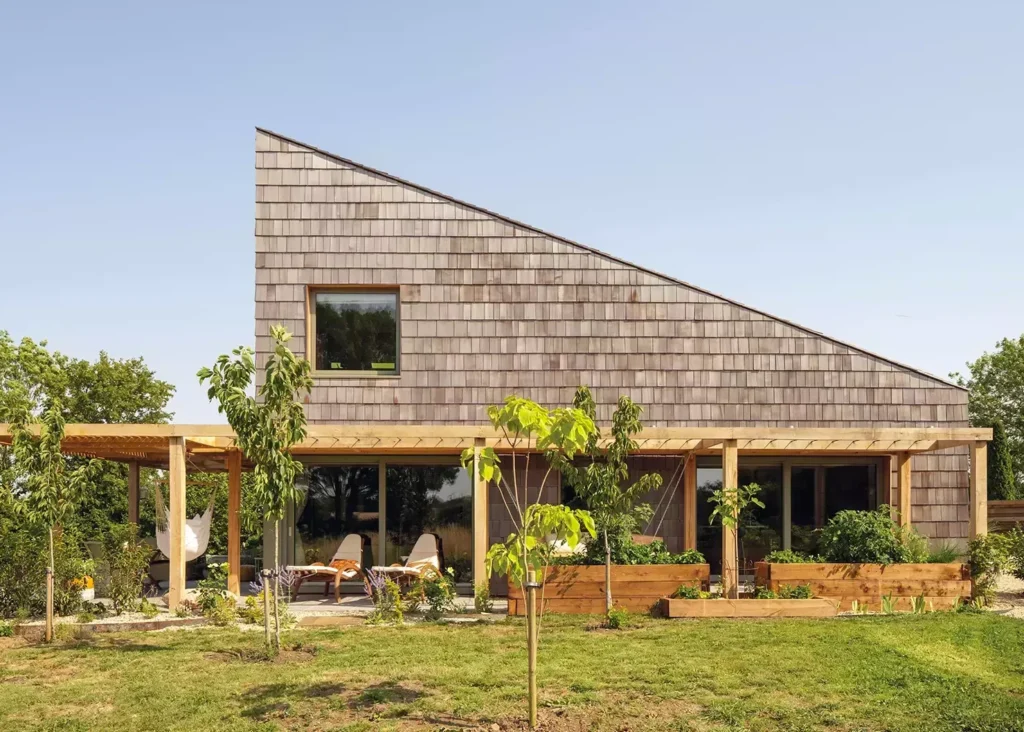
Photo: Matthew Smith
Suzanne and Steve chose a timber frame structural system, opting for the TechVantage T system from Frame Technologies. They were attracted to the system’s impressively low U-values, ranging from 0.13 to 0.09 W/m2K, as well as its breathable and sustainable glass wool insulation. They opted for the supply-only package, as Suzanne was keen to erect the frame to save on costs and know what went into her home. She enlisted help from her brother, John Rands, only bringing in other workers when they required the appropriate certifications.
For the foundations, the insulation was placed below the concrete rather than above to avoid using an additional layer of concrete, saving on materials, cost and carbon emissions. The concrete was then polished and left on show. Thanks to John’s skills as an engineer, they were able to develop some details as they went along, such as secret gutters in the roof and downpipes hidden behind the cedar shingle cladding.
Designed to meet passive house principles, the property is south facing, highly insulated and very airtight. “It retains heat incredibly well, so anything that creates warmth inside the house adds to the internal temperature very quickly,” says Suzanne. A mechanical ventilation and heat recovery (MVHR) system was installed to ensure a controlled path of airflow. It recovers 90% of residual heat in the house and redistributes it to the incoming supply of fresh air. They only needed to install a 2kW radiator downstairs to boost the heat in particularly cold winter periods. In the summer, the oak pergola helps provide solar shading.
“We realise now, with the increase in living costs, we made the right choice in going down the fabric first route and building only what we need to live comfortably,” says Suzanne. Having truly built the house with her bare hands, Suzanne is hugely satisfied with the results her hard work has yielded. “I can now stand in pride and gaze on the wonder of our creation.”
| OWNERS: | Suzanne & Steve Richardson |
| PROJECT: | Self build |
| LOCATION: | Suffolk |
| SIZE: | 170m² |
| PROJECT COST: | £350,000 |
| COST PER M² | £2,059 |
Perry & Sally Morrison: Low-Carbon Agricultural Renovation
Having longed for a bespoke home for over 15 years, Perry and Sally Morrison found a golden opportunity while holidaying in Cornwall. The project included a chalet bungalow and a dilapidated single-story agricultural building, perfectly aligning with their dream of a sustainable lifestyle. They bought the property, with a primary focus on revamping the structure. Local designer Matt Robinson quickly became their trusted collaborator, and was given the task of creating their sustainable dream home.
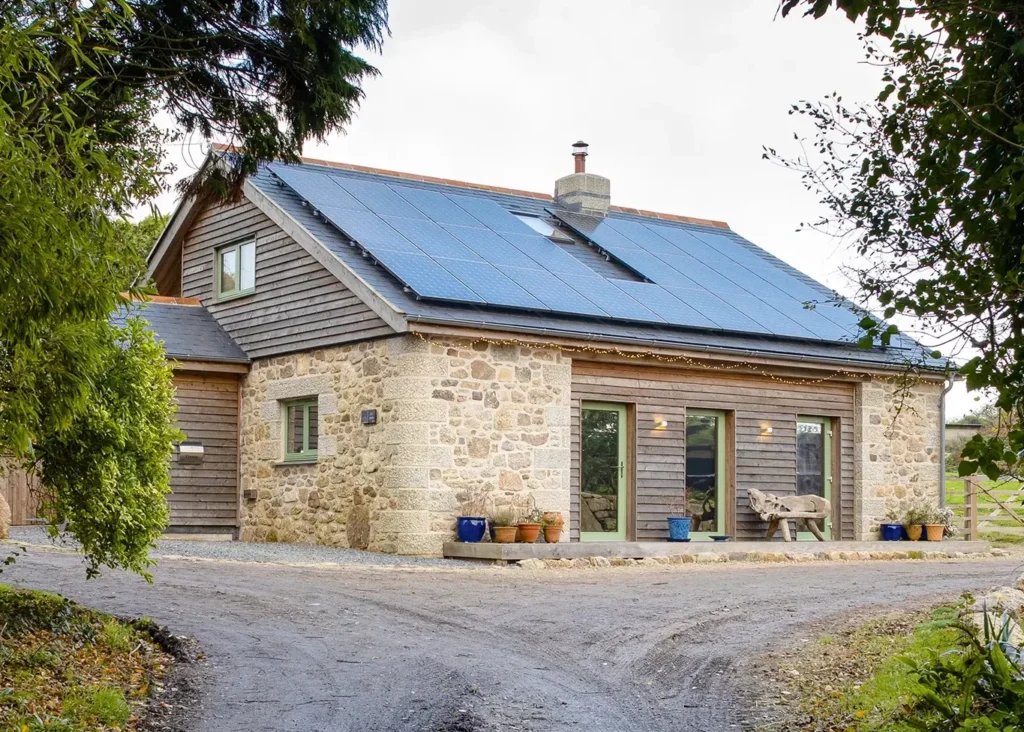
Photo: Simon Burt
The planning process unfolded in two stages: first, securing approval to convert the agricultural building; and secondly, expanding it into a one-and-a-half-story home. Consent was granted under the condition of preserving two external walls, the granite spine wall, and the stable door openings to maintain the building’s original character.
Matt introduced the couple to Dan Pye at Norsk Carpentry, who project managed the scheme. Throughout the development, the couple urged their builders to be as eco-friendly as possible. “We would ask, ‘is there a more eco-friendly solution?’ and Dan and his team really got into the spirit of it,” says Sally. The couple’s prime consideration was that every product and material was either reclaimed (such as the ridge tiles on the roof) or sustainable.
Renewable energy also played a central role. A 9.4kW solar panel array on the roof, coupled with battery storage, enables them to achieve self-sufficiency for at least six months annually, even powering their electric car. During winter, they turn to a renewable energy supplier to compensate for decreased electricity production. Less conventional was the couple’s choice of a masonry heater, which is a highly efficient form of radiant heater, popular in northern Europe. Perry and Sally’s wood-burning stove has a contra-flow chimney, built within silicon carbide casing, which can stay warm for up to 12 hours after the fire has gone out.
A second-hand programmable electric Aga, sourced and rebuilt by Sally, provides additional warmth in the well-insulated house, rendering it comfortable even during the coldest months. To complete the setup, a mechanical heat recovery and ventilation system was integrated.
The extraordinary two-bed stone and timber home blends seamlessly into the West Cornwall landscape. Perry and Sally’s meticulous approach extended to every detail, with a strict exclusion of materials such as plastic or formaldehyde-based MDF. “We have designed the house to fit how we live,” says Sally. “Seeing how much visitors enjoy our home when they come here is wonderful.”
| OWNERS: | Perry & Sally Morrison |
| PROJECT: | Agricultural conversion |
| LOCATION: | Cornwall |
| SIZE: | 135m² |
| PROJECT COST: | £451,500 |
| COST PER M² | £3,344 |
| The Best Self Build or Renovation Project 2023 is sponsored by Self-Build Zone, the National House Building Council’s partner for self build projects and a leading provider of self build site insurance and structural warranty products. |
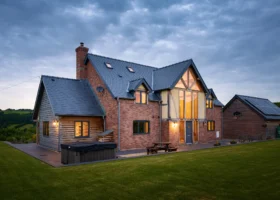
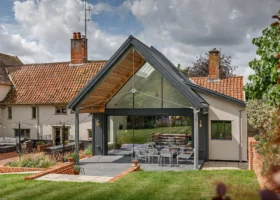

































































































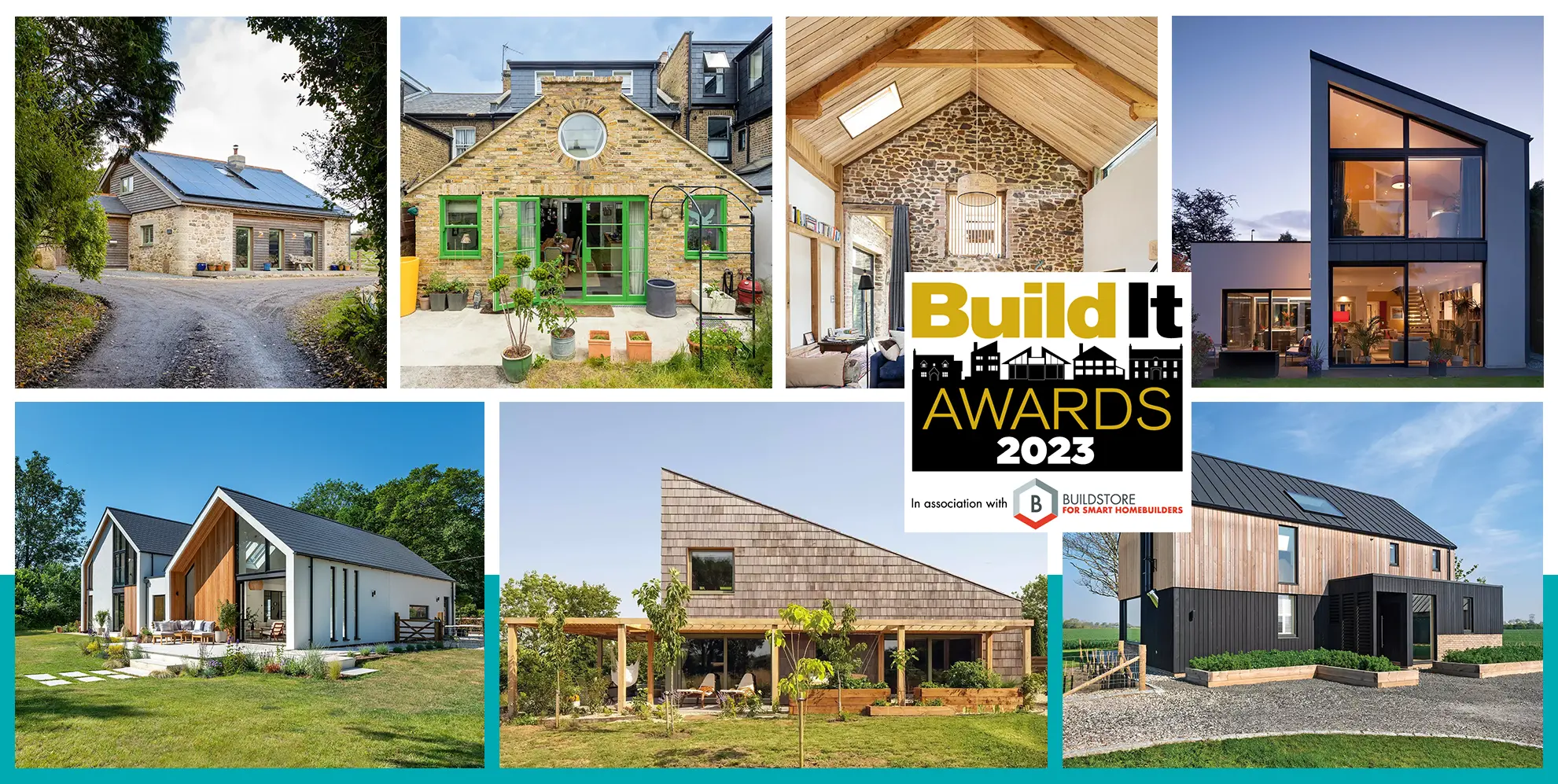
 Login/register to save Article for later
Login/register to save Article for later

